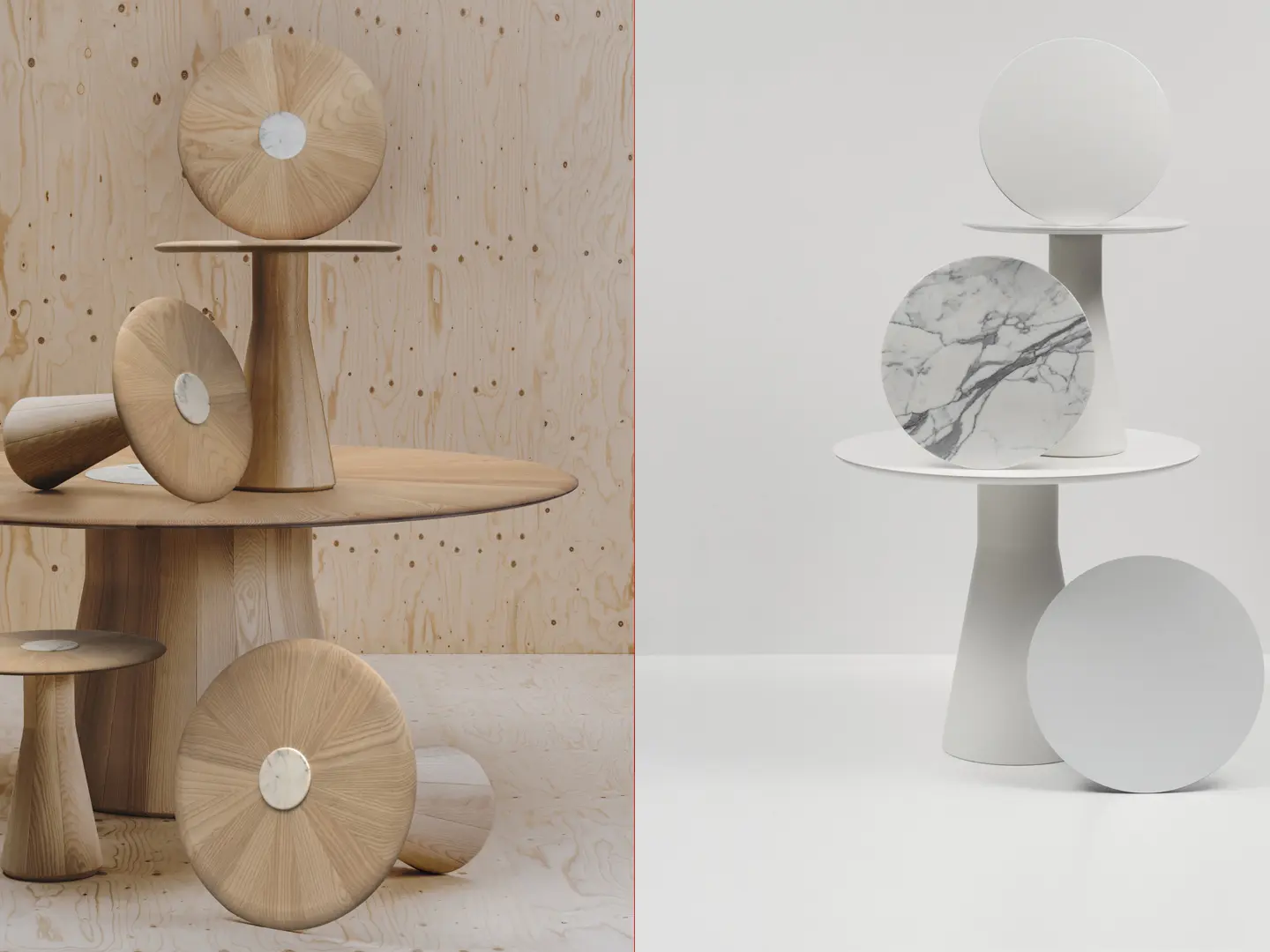In partnership with MiCodmc, a selection of establishments ripe for discovery during the 63rd edition of the Salone del Mobile.Milano, from 8th to 13th April

Manila, Andreu World
The landmark Spanish company celebrates its sixty-fifth anniversary with an unusual book that pays homage to the chair, packed with stories and surprising illustrations.

Wood going in, a chair coming out… A unique, warm and noble material and an iconic object, perhaps even the oldest of all iconic objects. That said, the chair only became democratic in the mid-15th century; before that, only a small number of privileged people would have had the luxury to sit.
In this story, the two protagonists met sixty-five years ago near Valencia, in Spain, spawning the solid, family-run enterprise that is celebrating this anniversary in 2021 with publication of Sillipedia. 101 historias de sillas, a very special book in Spanish and English editions, an open-ended project begun in 2016 that will continue into the future.
By no means an act of self-congratulation, as is evident from the title not far removed from the word “encyclopaedia”, the book showcases the culture of the chair, recounted in an entertaining way through 101 stories written by twenty authors, architects, designers, and art historians from different generations and backgrounds, and beautifully illustrated by Antonio Solaz.
Essays illustrate the history of the chair, from its origins to the 20th century, and the story behind the family business. The book concludes with a special tribute to Alessandro Mendini and his “manifesto” on this object, “the Cartesian axis of Western man”.
With lengthy captions, short stories, amusing anecdotes, Q&As, surprises great and small, fabulous illustrations and meticulous drawings, it is a rather remarkable book, sharing with the reader famous chairs on which Proust or Freud sat, regal chairs and simple political symbols, chairs for everyone and chairs for every taste. Books are created not just to be talked about but to be browsed, looked at and read… ideally sitting in a comfy chair. Have you ever thought, as Mendini puts it, that “While a chair works, man rests”?

Flex Executive, Andreu World
Resting is, as it happens, something the Andreu family does not seem to have spent much time doing. In 1950s Spain, as the country emerged from the challenges of previous decades, seventeen-year-old Francisco (Paco) began making chairs in the then-predominant, classical style. He made his first creation, the Model 1, at the family workshop in Alaquàs, near Valencia, in 1955.
After electricity reached the carpentry shop, it underwent rapid transformation, purchasing new equipment that made it possible to manufacture sophisticated models like the No. 72. When the young artisan travelled to Scandinavia to visit the main international fairs, he realized he wanted to work on more ground-breaking designs.
In the late Sixties, Paco’s desire for greater control over the entire production process prompted him to transfer the carpentry workshop to the edge of a beech forest in Navarra, where he set up a new production plant. Another move to another premises, forced by an incident that destroyed a portion of the manufacturing facilities, allowed the company to take another leap forward.
In 1998, the firm consolidated its prominence by launching Josep Lluscà’s iconic Andrea chair, with its unmistakable design of three metal legs and a wooden seat, back and arms.
In recognition of its production approach, in 2007 the company won a National Design Award for its commitment to sustainability, at a time when very few companies were solely processing FSC certified wood obtained from forests grown and replanted by the company itself.
This unique hallmark has continued to characterize the company to this day. In 2020, the company unveiled two new materials: Putr ECO®, 100% recycled plastic that made its debut in Patricia Urquiola’s Nuez Lounge BIO® lounge chair, and Circular ONE®, a fabric made from plastic bottles and textile offcuts.
While pursuing technical excellence, the firm has an ongoing commitment to innovation in craftsmanship and technology, moving forward the company’s trademark blend of tradition and modernity – what CEO and Director Jesús Llinares defines as “industrialized craftsmanship” – that Andreu World (in the early 1980s the management rebranded with this name) has long upheld as its hallmark value.

Reversetable, Andreu World
Since 2001, Andreu World has furthered its creative heritage through a commitment to promoting young designers via an International Design Contest. Over the years, the competition has shone the spotlight on local talent such as Pedro Miralles, Spanish designers Alberto Lievore, Jorge Pensi, and Patricia Urquiola, and international designers Piergiorgio Cazzaniga, Jasper Morrison, William Sawaya, Alfredo Häberli and Benjamin Hubert, all of whom have created practical, high aesthetic value solutions for expressing the company’s DNA: flexibility when it comes to end-users’ needs, deploying traditional craftsmanship in complete harmony with the latest technologies, and at all times focusing on quality, right down to the smallest detail.
In today’s increasingly globalized world, Andreu World’s Valencian imprint and its family management make it a rarity, and not just in design.
TITLE: Sillipedia. 101 historias de sillas (Spanish edition)
Chairpedia. 101 Stories of Chairs (English edition)
Author: Ramón Úbeda (main author) et al.
Illustrations: Antonio Solaz
Publishing house: La Fabrica
Year published: 2021
Pages: 240


 Stories
Stories










